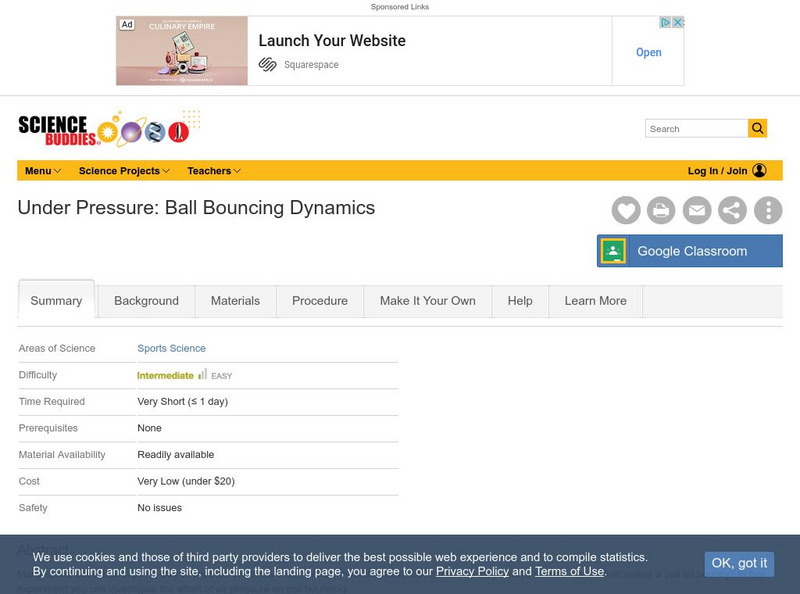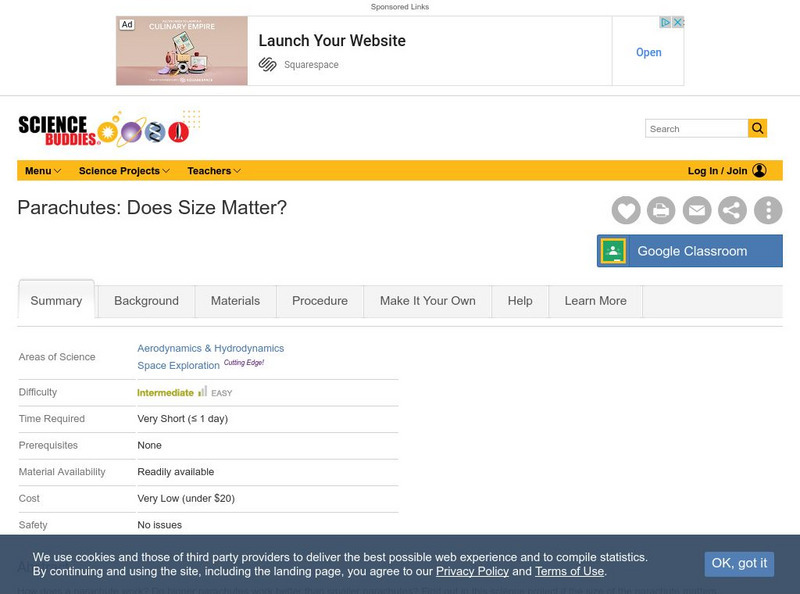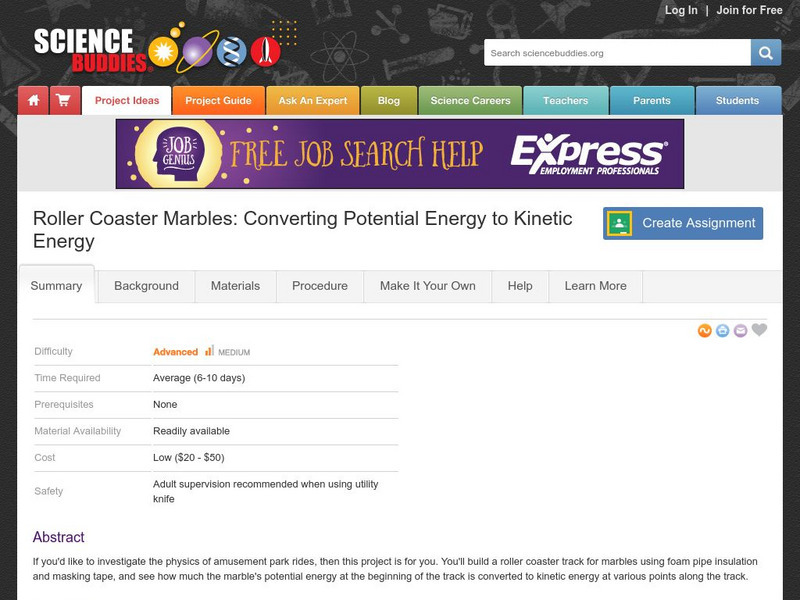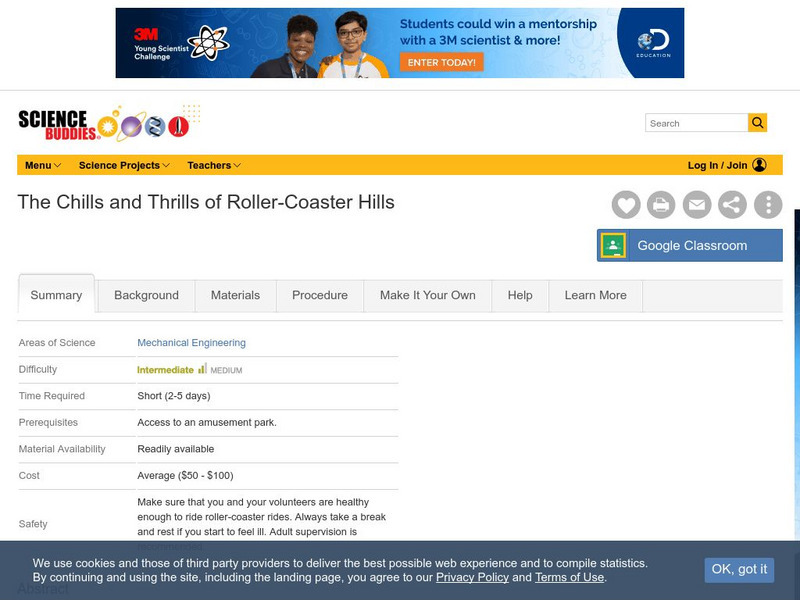Georgia State University
Georgia State University: Hyper Physics: Gravitational Potential Energy
This site defines and explains the concept of gravitational potential energy. Uses many equations and graphics to illustrate the idea. Provides an online computational practice set with immediate feedback.
Georgia State University
Georgia State University: Hyper Physics: Elastic Potential Energy
This site from Georgia State University Physics Department defines elastic potential energy and explains its origin. Provides an equation for computing elastic potential energy and an opportunity to practice solving problems with an...
CK-12 Foundation
Ck 12 Exploration Series: Simulations: Physics: Newton's Cannon
[Free Registration/Login Required] Learn about orbits and how an object can stay in orbit under the influence of gravity. By adjusting launch velocities users will understand how to successfully put a virtual satellite into orbit without...
CK-12 Foundation
Ck 12 Exploration Series: Simulations: Physics: Cliff Diver
[Free Registration/Login Required] Learn about the relationship between position and velocity for a diver accelerating under the influence of gravity and air resistance. Measure velocity and position based on variables of the height of...
Georgia Department of Education
Ga Virtual Learning: Physical Science: Force and Motion
In this student-paced module, students apply Newton's Laws of Motion to everyday life, calculate mathematical relationships involving force and motion using algebraic formulas, and understand the difference between mass and weight.
Massachusetts Institute of Technology
Mit: Open Course Ware: Courses: Physics: Classical Mechanics
College-level online course highlighting the study of classical mechanics. This course focuses on Newtonian mechanics, fluid mechanics, and kinetic gas theory. Course features include a 35 video lecture series by Walter Lewin. Also link...
PBS
Pbs Learning Media: Your Weight on Other Worlds
This interactive resource from the Exploratorium calculates your weight on other bodies in our solar system and offers an explanation of mass and weight and the relationship between gravity, mass, and distance.
PBS
Pbs Learning Media: Relativity and the Cosmos
This illustrated essay from the NOVA Web site introduces the basic concepts of Einstein's General Theory of Relativity and what we know about cosmology as a result.
PBS
Pbs Learning Media: Centripetal Force: Pulling Cs and Gs
In this interactive activity from NOVA, discover how centripetal force can affect you when riding in a car or flying at high speeds in a fighter jet.
PBS
Pbs Learning Media: Galileo: His Experiments
This interactive activity from the NOVA Web site samples Galileo's experiments with falling objects, projectiles, inclined planes, and pendulums.
Stanford University
Stanford Univ/gravity Probe B/relativity Q&a
Click "Relativity Q & A". Over 200 questions and answers dealing with relativity (special and general), answered by NASA scientist Dr. Sten Odenwald. Answers are generally one paragraph, very clear and coherent.
University of New South Wales (Australia)
University of New South Wales: School of Physics: Physclips
Physiclips thoroughly presents mechanics concepts with animations and film clips.
TED Talks
Ted: Ted Ed: Would You Weigh Less in an Elevator?
Video that uses an elevator in motion to describe the relationship among weight, gravity, and relative motion. [3:36] Includes a short quiz and a list of additional resources to explore.
TED Talks
Ted: Ted Ed: The Benefits of Good Posture
Has your mom ever told you, "Stand up straight!" or scolded you for slouching at a family dinner? Comments like that might be annoying-but they're not wrong. Your posture is the foundation for every movement your body makes and can...
PBS
Pbs Kids: Design Squad Challenge: High Rise (Pdf) [Pdf]
Hands-on challenge to build a tall tower that can support a tennis ball. Provides full list of materials with ideas on how to build, test, and redesign it if necessary, or take it to the next level. Activity focuses on the engineering...
Science Buddies
Science Buddies: Project Ideas: Popping an Ollie: Skateboards and Physics
In this science fair project, investigate the effect of speed on the distance and height of the skateboard trick the "ollie". The Science Buddies project ideas are set up consistently beginning with an abstract, objective, and...
Science Buddies
Science Buddies: Under Pressure: Ball Bouncing Dynamics
Many sports use a ball in some way or another. We throw them, dribble them, hit them, kick them, and they always bounce back. What makes a ball so bouncy? In this experiment you can investigate the effect of air pressure on ball bouncing.
Science Buddies
Science Buddies: What Goes Up, Must Come Down
Standing on a balcony near the top of the 179-foot tall Tower of Pisa, a young scientist dropped two iron balls into the crowd below. The scientist, young Galileo, was not trying to knock his fellow professors on the head, but was trying...
Science Buddies
Science Buddies: Distance and Speed of Rolling Objects
This project is an experiment in classical physics. You'll be following in Galileo's footsteps, and investigating Newton's laws of motion, but you'll be taking advantage of modern video recording technology to make your measurements. The...
Science Buddies
Science Buddies: Parachutes: Does Size Matter?
Experiment with different sizes of parachutes to find out if size matters when slowing the descent of the parachute. The Science Buddies project ideas are set up consistently beginning with an abstract, objective, and introduction,...
Science Buddies
Science Buddies: Roller Coaster Marbles: How Much Height to Loop the Loop?
This is a really fun project even if you don't like going on roller coasters yourself. You'll build a roller coaster track for marbles using foam pipe insulation and masking tape, and see how much of an initial drop is required to get...
Science Buddies
Science Buddies: Converting Potential Energy to Kinetic Energy
If you'd like to investigate the physics of amusement park rides, then this project is for you. You'll build a roller coaster track for marbles using foam pipe insulation and masking tape, and see how much the marble's potential energy...
Science Buddies
Science Buddies: How Do Roots Grow When the Direction of Gravity Changes?
You might not know it, but plants are able to sense their environment and actually respond appropriately. One of the key parameters that every plant must respond to is the direction of gravity: stems go up (opposite to the pull of...
Science Buddies
Science Buddies: The Chills and Thrills of Roller Coaster Hills
Lots of people enjoy roller coasters, but not many understand why they feel the strange excitement they do when riding them. In this science fair project, you will build and use an accelerometer to figure out and measure gravity-induced...





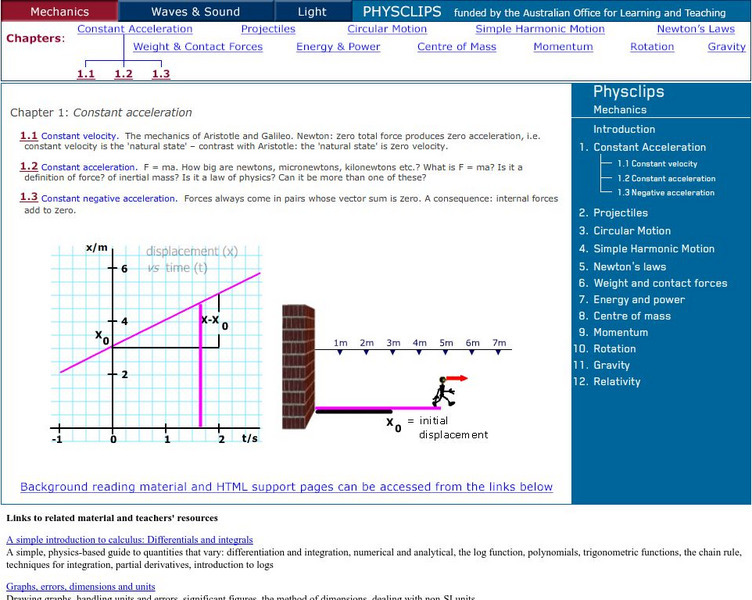


![Pbs Kids: Design Squad Challenge: High Rise (Pdf) [Pdf] Handout Pbs Kids: Design Squad Challenge: High Rise (Pdf) [Pdf] Handout](https://content.lessonplanet.com/knovation/original/39876-b5e1ef7fe98a421947bc207adbf223d2.jpg?1661243864)

